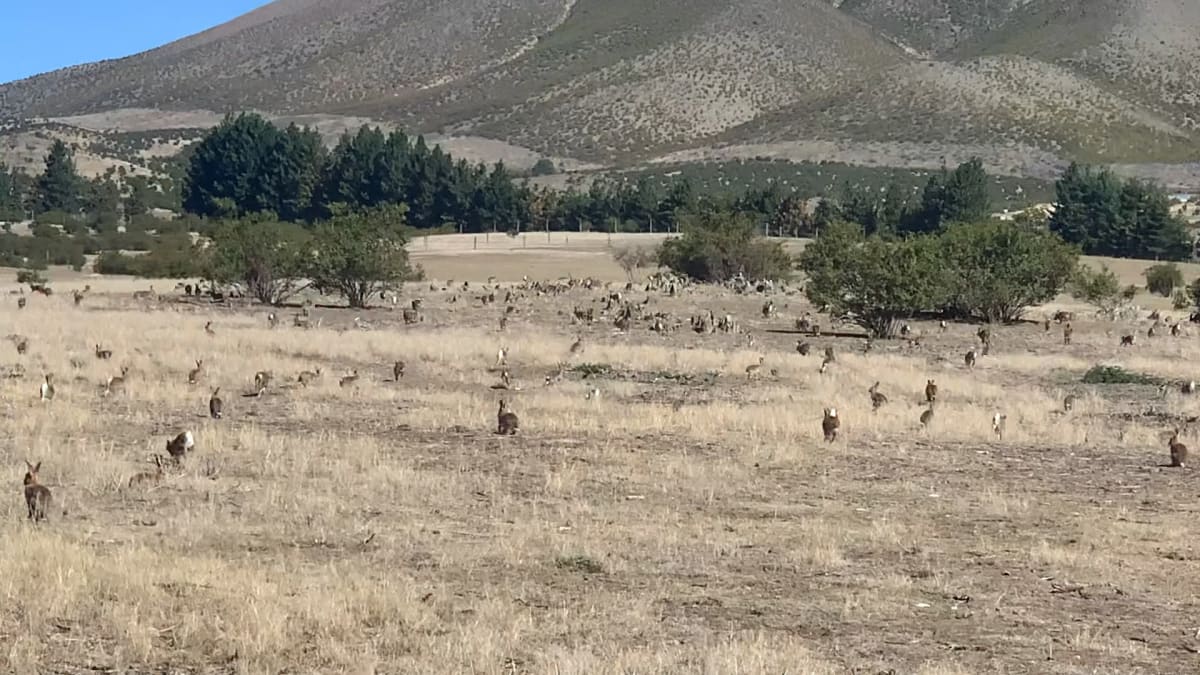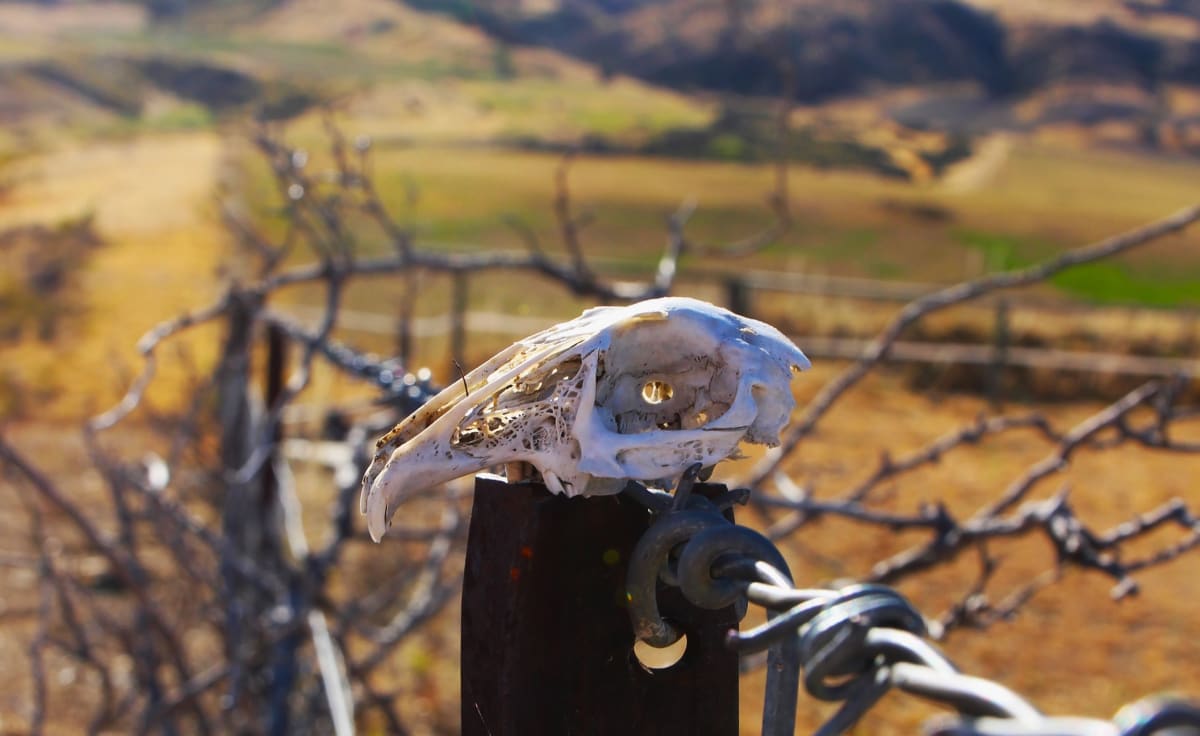
Renewed council efforts to control Otago’s most notorious pest are not equal to the task of keeping rabbit numbers down a review has found
A game of whack-a-mole being played against rabbits by Otago Regional Council has seen progress in some trouble spots but new populations emerging elsewhere.
Central Otago, traditionally the main problem area, is now being joined by coastal Otago as rabbits establish seaside strongholds in such places as the Catlins, Otago Peninsula and Waikouaiti.
The pests are a serious threat to biodiversity and the environment, plaguing the region with a costly and seemingly ineradicable problem.
The council’s role is to ensure landowners keep their rabbit numbers below a set level by advising people on control methods, monitoring numbers and enforcing the rules when populations become excessive.
Of 516 property inspections done in the past 12 months, more than half were found to be non-compliant.
Within the past eight months five government agencies that own land in Otago were issued “request for work” letters because of excessive rabbit numbers.
And 12 of 52 private commercial landowners were also asked to undertake control work after failing inspections.
Recent efforts that have had success relied on co-ordinating groups of neighbours with two council staff now working on this approach.
Councillor Gary Kelliher says the local authority’s choice is to either do a little bit of work everywhere or a lot in chosen locations. In recent years it has chosen the latter.
He doesn’t totally support the strategy but accepts that it needs to run its course to have a chance to be proven.
“The council has only so many people. There will always be a battle for resources.”

Kelliher, who farms near Alexandra, reckons rabbit numbers in the area are up and he has had to “really ramp up” control work.
“There are always hotspots but I think a true gauge is if these are expanding. This year I think the rabbits have a chance to really catch us out.”
Farmers base their winter poisoning planning on observed rabbit numbers in autumn. This year these decisions will be “critical” to prevent burgeoning numbers.
Must do better
A review halfway through the council’s 10-year regional pest management plan has concluded it is not keeping a lid on the destructive pest.
Along with new hotspots, no new control methods from here or overseas have been found to be available.
The potential for the government to ease controls over virus use appears the only ray of hope in the report, which was discussed at the council’s environmental implementation committee last month.
With eradication broadly accepted as being impossible, the pest plan adopted in 2019 set a goal of “sustained control” for managing rabbit populations.

This means keeping infestations on or below level 3 of the Modified McLean Scale (MMS) – that is just the odd rabbit seen and rabbit poo-piles appearing 10m or more apart.
The plan was aided timing-wise by coming into operation just after the first release of a fresh calicivirus, RHDV1-K5.
One of two reviews last year of how well the plan’s monitoring and management systems are working found “reliance on the RPMP programme as it stands, coupled with strategic release of RHDV1-K5, is not enough to achieve the objective of maintaining feral rabbits at MMS 3 across the region”.
Warmer winters, changes in land use and landowners not accepting rabbit-control was their responsibility are conspiring to worsen the problem.
In the course of the review it was found newcomers to Otago believed it was the council’s job to eradicate the pests. But for 10 years that responsibility has rested with private and public-sector landowners.

Central Otago and Wanaka have had high rabbit population densities historically. But coastal Otago to south of Dunedin, the Otago Peninsula, Moeraki, the Catlins, Millers Flat, Milton and Waihola, Waikouaiti and the Shag Valley and Pig Route areas are new hotspots.
Causes include the creation of smaller land parcels, inadequate control measures by both the council - when the task fell to it - and landowners, and those making the effort losing motivation because of rabbits turning up from uncontrolled neighbouring properties.
Other areas identified from 2006 through to 2022 where numbers are increasing are the northern end of Lake Dunstan through to Queensberry and Luggate near Wanaka. Decreasing numbers have been detected in South Otago, the Ida Valley and the mid-Clutha Valley, but there are pockets within locations where densities vary.
Hope goes viral
A possible bright spot in curbing the rabbit plague could be the loosening of government biosecurity controls over the use of rabbit-killing viruses.
Council environmental implementation manager Libby Caldwell says staff are looking into the viability of having the RHDV virus removed from the government’s unwanted organisms list.
Experts from Manaaki Whenua Landcare Research are advising on the possibilities, but importing new strains from overseas is not an immediate goal.
“If RHDV was to be removed from the unwanted organisms list this is likely to just be for the strains that are in New Zealand, not for new strains.
“If there are other new strains we would need to seek approval to import them to ensure there are no unforeseen negative effects on other species or pets,” Caldwell says.
Kelliher thinks virus use could provide a way for the council to help farmers and semi-urban landowners.
“It is desperate that we need to do this. You can’t expect farmers to work all day and then be shooting all night, so it reaches a point when of course rabbits are going to get left.
“Anything we can do as an organisation … then we need to take those opportunities.”
Viruses are helpful in semi-urban areas where such methods as shooting and poisoning are impractical.
“We are limited in those areas as to what we can do ... these viruses don’t kill cats and everything else we do kills cats.”
Kelliher says often in lifestyle block areas there is a mix of “good work or no work” being done to combat rabbits.
Caliciviruses can efficiently knock rabbit populations, as did the original illegal introduction in Central Otago in 1997 and the more recent controlled release by the the council in 2018.
The virus’ initial vigour doesn’t last, however, and kills have been patchy in recent years. A handful of RHDV strains are circulating in New Zealand and infected rabbits that survive weaker strains can develop immunity.
Outcomes can be improved, however, with manipulation of virus strains and releases. In Australia, where scientists are homing in on ways to use technology to “accelerate and direct the natural evolution” of RHDV, results are encouraging.
The ultimate goal of the Australian project is to be able to repeatedly select tailored virus strains for subsequent virus releases.
This would give the virus the “cutting edge to stay ahead in the co-evolutionary arms race with its host.”
Made with the support of the Public Interest Journalism Fund








